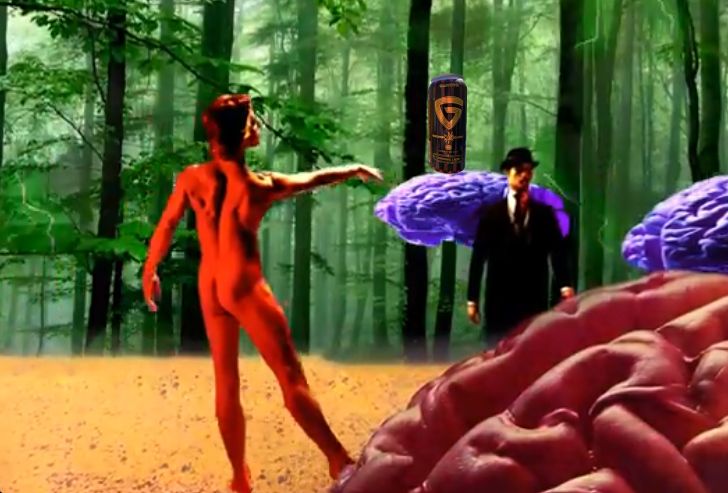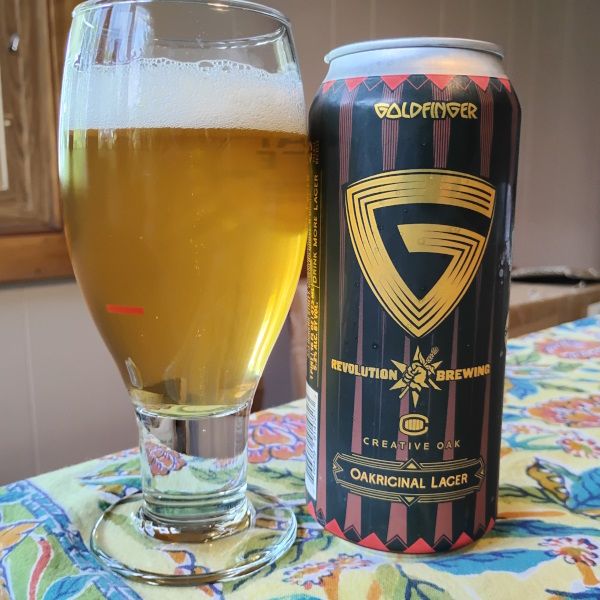Has it really been nine and a half years since I've had a wood aged beer, Heart of Oak by Leine's? Bourbon barrel aged brews don't count as I think the idea is to infuse your beer with a spirit rather than a strictly arboreal flavor. While I'm on the subject, kudos to Lakefront for Wendy, a doppelbock which utilized bourbon-soaked oak chips that imparted a more subtle bourbon taste that complemented rather than overwhelmed the beer.
Plain, unspirited/unwined barrel/wood aged beers are hard to come by. Even more rare than Rauchbier. It's not exactly a mega popular flavor and dealing with wood must be a pain. You don't want any microbial thingies on your chips, staves, logs or whatever that would give your brew an off taste. Wood is a major flavor in wine so why isn't it in beer? And, as barrel aging goes, why is oak so popular?
When I saw this wood aged beer sans bourbon, a collaboration between Goldfinger and Revolution, I just had to try it. Goldfinger is a great brewery that combines care and tradition to make very tasty lagers. While Revolution dances with many an IPA, they brew other beers more to my taste. For example, not only did they throw my favorite grain, rye, into a stout, they also put some neat Repo Man artwork on the label.
The Oakriginal can doesn't say exactly how this beer got its oak flavor. Was it aged in oak barrels? Were oak chips involved? Did the brewmasters head to the woods with Husqvarna in hand, cut down a random oak, and throw some of the resulting cordwood into the fermenter? Now that I look closer, I see that Creative Oak is listed on the label and this California company's website notes the work of their master coopers.
The can does note, though, that "single forest French oak" was used. If horizontal lagering tanks weren't enough, this is definitely getting into hoity-toity wine territory. French oak apparently has more tannins than American oak which perhaps explains its use in winemaking. In addition to bitterness, oak has a clovey, vanillay, and, well, woody taste. How will these flavors fare in a Helles?
My pour produced a big, white head that I could hear. The bubbles churned away in a micromaelstrom like they do in soda, my cat's pleading meows for dinner were barely heard above the din. As with any Helles, the beer was a lovely yellow but had a slight haze which I presume was protein whatever you call it as Goldfinger's lagers have always been clear as day as is conventional. Maybe something is imparted by wood that gives a touch of cloudiness. There were a few bubbles here and there inside. My first sniff caught a luscious bready scent followed by wood, and then grassy hops.
My first sip revealed a medium-light body with the perfect fizz. Those Maillard reactions done good as I tasted that precious toasty bread flavor along with those grassy hops. A fine Helles indeed. Then I tasted the oak underneath it all. It was rather mellow but it added a smoothness that took the edge off the hops a shade, I think. Plus I like the flavor of oak so it had that going for it as well.
On the finish, the malt and oak flavors had one final flourish and then quickly faded as the hops, now with a herbal, almost minty, taste, made things fairly dry and slightly less bitter.
Goldfinger makes great beers so I was totally unsurprised that this was a mighty tasty Helles. The oak was subtle but easily discernible and its taste accented the grain flavor very well. Same with the hops. The oak gave flavors unlike the ones hops do yet they played nicely together. An excellent brew.
Junk food pairing: Pair Oakriginal Lager with Jays Hot Stuff potato chips. Their earthy flavors complement the oak while the Helles with soothe the burn.


No comments:
Post a Comment